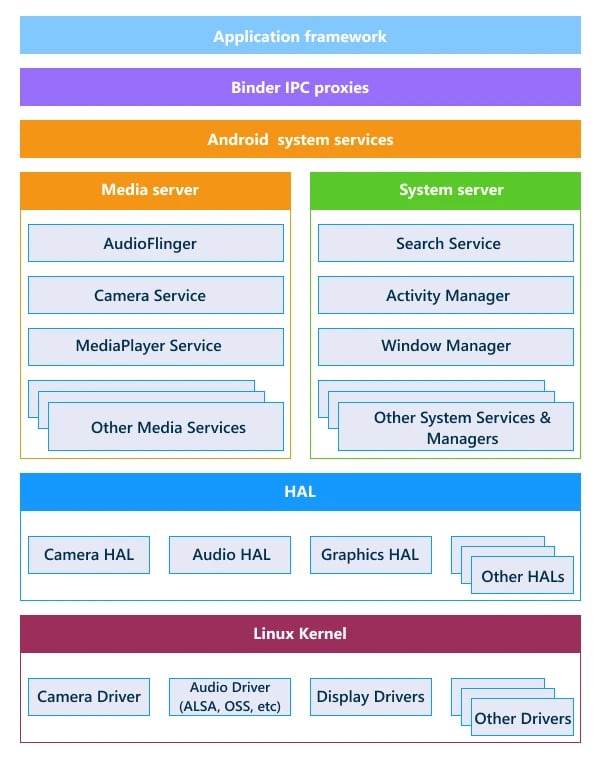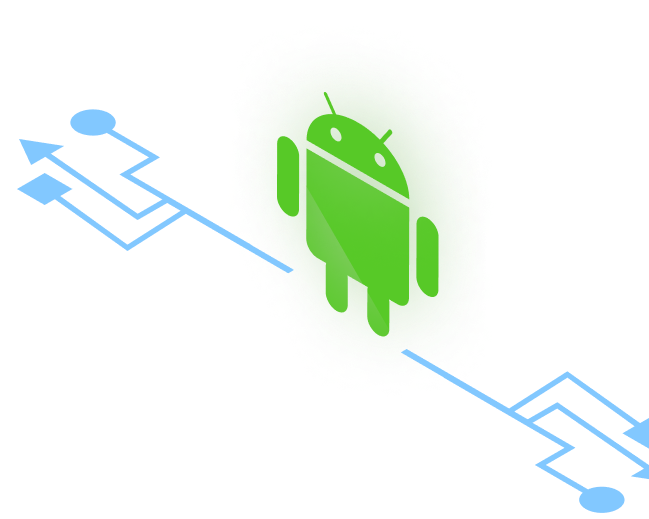As a standard driver for peripheral devices, a hardware abstraction layer (HAL) is frequently used. The operating system (OS) communicates with the HAL, which activates the necessary hardware. It connects the two worlds of hardware and software. Many OSes make use of it. For example, it has been included in Windows since Windows NT. DOS, Mac, Android, Linux, and other Unix variations utilize it.
Many OSes have a hardware abstraction layer that eliminates the need to alter the OS kernel in order to run programs on computers with various hardware architectures. It is a device driver that provides a consistent interface for programs to connect to hardware peripherals. It can be found in the OS kernel or as device drivers.
The Android HAL standard provides hardware manufacturers with a defined interface for doing lower-level driver changes. It can be used to extend the capabilities of a higher-level framework without influencing or changing it. At the right time, your Android device will load the implementations in modules. For hardware support, Android relies on HAL applications. The Android HAL language supply layer is written in C/C++. It uses features supplied by the lower-layer Linux kernel to support an Android application or the framework order.
The relevance of Android architecture for solution providers in developing Android-based solutions is discussed in this article.
What does hardware abstraction layer (HAL) mean?
A hardware abstraction layer (HAL) is a programming or code layer that allows for more broad communication between software and hardware in a system. It may be utilized on a number of OSes in a variety of applications and scenarios. Developers had to hard-code drivers, kernels, or APIs for each hardware device before employing a HAL to bridge the gap between hardware and software.
This was far from ideal because there may be hundreds of hardware variations that needed to be manually programmed and tested. Application developers would devote more time and effort to hardware compatibility than to quality assurance. Currently, available operating systems support the use of a HAL to assist developers to save development time while improving build quality.
We can also say that it is a programming layer that allows a computer OS to deal with hardware on an abstract rather than technical level. It is a logical code division that serves as an abstraction layer between the actual hardware and software of a computer. It is a computer driver interface that enables software to communicate with the hardware. HAL, on the other hand, largely hides diverse hardware structures from the operating system by ensuring that system hardware components communicate consistently.
Some examples of HAL Layer are:
- Boot code
- Code for Context switch
- Configuration Codes
- Access to Hardware resources
Hardware abstraction layer within the Android architecture
The Android HAL standard offers a standardized interface for hardware makers to implement lower-level driver updates. You can use a HAL to add functionality to a higher-level framework without affecting or modifying it. Your Android device will load the implementations in modules at the appropriate moment. Android relies on HAL apps to obtain hardware support. Android HAL is a C/C++ language supply layer. It supports an Android application or the framework order by using functions provided by the lower-layer Linux kernel.
The Android system HAL has two implementations: Legacy and Stub HAL. When using Legacy HAL, other programs directly call the method to export a shared library HAL layer, similar to how they would with a typical Linux shared library. Google later proposed the Stub HAL method, which is still available as a shared library (so), methods (functions) for all of its external access entry pointers stored in a unified data structure, and other programs that need to access the HAL method, they need to get the Stub, and then read and write specific function pointers through the underlying device.
What is the Android architecture?
The following components make up the Android system architecture:
Application framework: Most application developers utilize an application framework. As a hardware developer, you should be familiar with developer APIs, since many of them translate directly to the underlying HAL interfaces and can give useful information regarding driver implementation.
Binder IPC: The Binder Inter-Process Communication (IPC) technology allows the application framework to call into the Android system services code across process boundaries. The interaction of high-level framework APIs with Android system services is now possible. This communication is concealed from the developer at the application framework level, and things appear to "just work."
Android system services: System services, such as Window Manager, Search Service, and Notification Manager, are modular, targeted components. Application framework APIs interface with system services in order to gain access to the underlying hardware. Android has two types of services: system (like Notification Manager) and media (like YouTube) (services involved in playing and recording media).
Hardware abstraction layer: A hardware abstraction layer (HAL) establishes a standard interface for hardware suppliers to implement, allowing Android to remain agnostic about driver implementations at the lower levels. You may use a HAL to provide functionality without influencing or changing the higher-level system. HAL implementations are packed as modules and loaded at the right moment by the Android system.
Linux kernel: The process of creating custom device drivers is identical to that of creating a standard Linux device driver. Android runs on a modified Linux kernel that includes Low Memory Killer (a memory management system that prioritizes memory preservation), wake locks (a PowerManager system service), the Binder IPC driver, and other features critical to a mobile embedded platform. These changes are mostly for system functioning and have little bearing on driver development. You can use any kernel version as long as it has the necessary functionalities (such as the binder driver). However, we recommend that you use the most recent Android kernel.

Why do we need a HAL within Android?
HAL's main benefit is that it encapsulates diverse vendor implementations and offers a uniform API for top levels.
Different hardware combinations may be available from different manufacturers. They may support the same feature in several ways. Hardware vendors use HAL, and Android is unaware of their internals. So HAL is a hardware-specific solution (optimized and tuned for the underlying technology) that provides a general user interface.
The abstraction layers' objective is to allow certain operations to be entirely managed in a given job. You must wait until the operation is complete before returning data from it in this procedure. Then this procedure can continue.
In a nutshell, Android HAL (Hardware Abstraction Layer) connects hardware and software. Java APIs, not by system calls, are used by the Android application/framework to connect with the underlying hardware. Linux, on the other hand, can only handle system calls from applications. As a result, a glue layer between the Android framework and the Linux operating system is required. Android HAL allows Android apps and frameworks to connect with hardware drivers.
HAL offers APIs for Android applications that allow services to send requests to the device. To service the request from the android framework, HAL employs functions supplied by the bottom layer Linux system. HAL is a vendor-specific implementation of a C/C++ layer.
What is the benefit of learning about the hardware abstraction layer?
The HAL can be found in the OS kernel or as device drivers on a computer, and it provides a uniform interface for applications to connect with hardware peripherals. HAL is a piece of computer software that handles hardware abstraction. It is usually found inside operating systems and provides level actions such as task creation and deletion.
The HAL offers the following advantages:
- Allowing apps to squeeze as much performance as possible from hardware devices
- Enabling the OS to run regardless of hardware architecture
- Allowing device drivers to have direct access to each physical device, allowing applications to be device-agnostic.
- Generally, allowing software applications to interface with physical components.
- Making mobility easier
- It is an important component of the system.
- In the modular test system, this is critical.
- It will lower the danger of the job.
- Because of this, the cost of implementation is lowered.
- The amount of time it takes to complete the task is reduced.
- It aids in the development of the system.
- With its assistance, the system is properly maintained.
- It's handy for upgrading test systems.
HALs are included not just in the Android OS but in macOS, Linux, DOS, Solaris, BSD, Windows NT, Windows 2000, and IBM's AS/400 operating systems.
Summary
In a nutshell, HAL is a logical code division that serves as an abstraction layer between a computer's physical hardware and software. It is a computer driver interface that enables software to communicate with the hardware. HAL, on the other hand, largely hides diverse hardware structures from the operating system by ensuring that system hardware components communicate consistently. This knowledge helps us to understand how the hardware and software components communicate and integrate the information while connecting. Application developers would devote more time and effort to hardware compatibility than to quality assurance.
Build unique products, boost device performance
See why emteria is the chosen Android™ customization & management platform for OEM solution builders — and what it can do for your team and customers.







